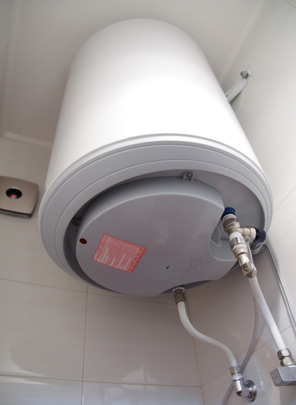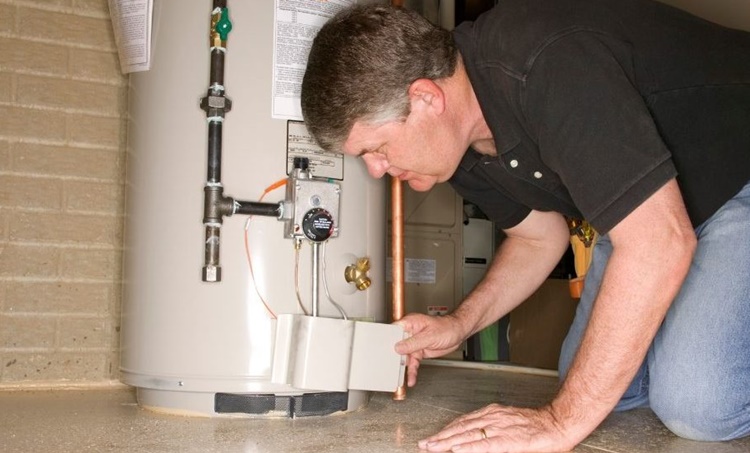Best Ways to Care for Your Home's Hot Water System EffectivelyEffective Techniques for Maintaining Your Home's Hot Water SystemHow to Care for Your Home's Hot Water System Effectively
Best Ways to Care for Your Home's Hot Water System EffectivelyEffective Techniques for Maintaining Your Home's Hot Water SystemHow to Care for Your Home's Hot Water System Effectively
Blog Article
Listed here in the next paragraphs you can get a bunch of good quality insight around What Kind of Maintenance Do Water Heaters Need?.

Warm water is vital for daily comfort, whether it's for a revitalizing shower or washing recipes. To ensure your warm water system runs effectively and lasts much longer, regular maintenance is vital. This short article gives useful tips and insights on just how to maintain your home's hot water system to stay clear of disruptions and expensive fixings.
Introduction
Preserving your home's warm water system might seem overwhelming, but with a few easy actions, you can guarantee it runs smoothly for many years ahead. This overview covers everything from recognizing your warm water system to DIY maintenance ideas and recognizing when to call in expert assistance.
Value of Keeping Your Warm Water System
Normal maintenance not only prolongs the life expectancy of your hot water system yet also ensures it runs successfully. Disregarding maintenance can bring about lowered efficiency, higher energy costs, and even premature failure of the system.
Indications Your Warm Water System Demands Upkeep
Understanding when your warm water system requires interest can protect against significant concerns. Look out for signs such as inconsistent water temperature, unusual sounds from the heating system, or corroded water.
Understanding Your Hot Water System
Before diving into maintenance tasks, it's practical to recognize the standard parts of your warm water system. Normally, this consists of the hot water heater itself, pipes, anode poles, and temperature level controls.
Month-to-month Upkeep Tasks
Normal month-to-month checks can assist catch minor concerns prior to they intensify.
Flushing the Water Heater
Purging your hot water heater eliminates debris accumulation, enhancing effectiveness and prolonging its life.
Monitoring and Changing Anode Rods
Anode rods avoid rust inside the storage tank. Inspecting and changing them when broken is important.
Examining and Adjusting Temperature Level Setups
Changing the temperature setups guarantees optimal efficiency and security.
DIY Tips for Maintenance
You can perform numerous maintenance tasks on your own to keep your warm water system in leading problem.
Checking for Leakages
On a regular basis examine pipelines and connections for leaks, as these can cause water damage and greater bills.
Examining Pressure Alleviation Valves
Checking the stress relief valve ensures it operates properly and prevents too much pressure build-up.
Insulating Pipelines
Insulating hot water pipes decreases warmth loss and can save power.
When to Call an Expert
While DIY upkeep is valuable, some problems need professional know-how.
Complex Concerns Calling For Expert Assistance
Examples consist of significant leaks, electric problems, or if your hot water heater is regularly underperforming.
Routine Specialist Upkeep Conveniences
Professional upkeep can include complete evaluations, tune-ups, and making certain compliance with safety criteria.
Conclusion
Routine upkeep of your home's hot water system is necessary for efficiency, durability, and cost savings. By adhering to these tips and understanding when to look for specialist help, you can make sure a reputable supply of warm water without unanticipated disruptions.
Water Heater Maintenance: The Basics
Maintaining your water heater will ensure it operates efficiently and has a longer lifespan. Neglecting regular maintenance can lead to costly repairs and an even bigger chunk of your savings if you have to replace it sooner than necessary. But there’s good news: Most water heater maintenance tasks are relatively simple and easy for homeowners with basic DIY skills.
Flush the Water Heater
Over time, sediment and minerals can build up in the tank, reducing its efficiency and potentially causing damage. To flush the tank, turn off the power or gas supply, attach a hose to the drain valve near the bottom and open the valve to drain the water until it runs clear. Ideally, flush the tank annually.
Replace the Anode Rod
The anode rod is a sacrificial metal rod that helps prevent corrosion inside the tank. Inspect and replace it every three to five years or per the manufacturer's recommendation. To replace the anode rod, turn off the power or gas supply, drain a few gallons of water from the tank, unscrew the old rod and replace it with a new one. If the anode rod is significantly corroded or covered in calcium buildup, it's a sign the water heater may need to be replaced soon.
Tune-Up
A yearly tune-up can help identify potential issues and ensure your water heater operates at peak efficiency. This typically involves checking the thermostat, burner assembly (for gas heaters) and any other components specified by the manufacturer. During a tune-up, the technician may also clean the burner and adjust the pilot light (for gas heaters) or examine the heating elements (for electric heaters).
How to Maintain Your Water Heater
Insulate the tank. Insulating the tank can improve energy efficiency and reduce heat loss, saving you money on energy bills. You can purchase precut insulation blankets designed specifically for water heaters or use standard fiberglass insulation wrapped securely around the tank. Check the temperature. The recommended water temperature for most households is around 120 degrees Fahrenheit (49 degrees Celsius). Higher temperatures can increase energy costs and potentially cause scalding. Use a kitchen thermometer to check the temperature at the faucet nearest the water heater. Monitor water pressure. Excessive water pressure can strain the water heater and cause leaks or even tank failure. Install a pressure-reducing valve if necessary. The ideal water pressure range is between 60 and 70 PSI (pounds per square inch). Test the temperature and pressure (T&P) relief valve. The T&P relief valve is a safety feature that releases pressure if the tank gets too hot or the pressure builds up too high. Test it annually by lifting the lever and allowing a small amount of water to release. Replace the valve if it doesn't release water or reseal properly. Check for leaks. Regularly inspect the tank, pipes and fittings for leaks or corrosion. Deal with issues promptly to prevent further damage. Even a small leak can lead to significant water damage over time. Consider a tankless water heater. If your traditional tank-style water heater is nearing the end of its lifespan ( typically 10 years), consider replacing it with a tankless water heater. These units heat water on demand, reducing standby energy losses and potentially saving you money on your energy bills. Schedule professional maintenance. While homeowners can perform many water heater maintenance tasks, it's still a good idea to schedule professional maintenance every few years. A plumber or HVAC technician can thoroughly inspect the unit, identify potential issues and ensure it operates safely and efficiently. https://www.homeserve.com/en-us/blog/home-improvement/hot-water-heater-maintanence/

I discovered that page about Water Heater Maintenance Tips You Can't Afford to Forget when doing a lookup on the search engines. If you please set aside a second to promote this blog if you enjoyed it. Thanks a bunch for your time. Come back soon.
Call Today Report this page